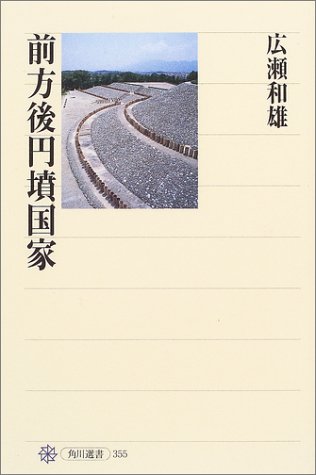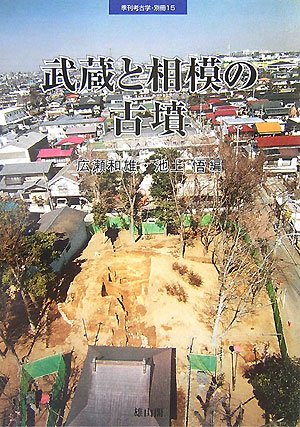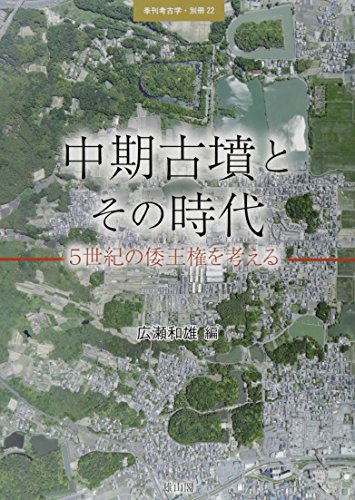10 0 0 0 OA 弥生農耕の起源と東アジア-炭素年代測定による高精度編年体系の構築-
4 0 0 0 IR 古墳時代像再構築のための考察--前方後円墳時代は律令国家の前史か
- 著者
- 広瀬 和雄
- 出版者
- 国立歴史民俗博物館
- 雑誌
- 国立歴史民俗博物館研究報告 (ISSN:02867400)
- 巻号頁・発行日
- vol.150, pp.33-147[含 英語文要旨], 2009-03
西日本各地の首長同盟が急速に東日本各地へも拡大し,やがて大王を中心とした畿内有力首長層は,各地の「反乱」を制圧しながら強大化し,中央集権化への歩みをはじめる。地方首長層はかつての同盟から服属へと隷属の途をたどって,律令国家へと社会は発展していく,というのが古墳時代にたいする一般的な理解である。そこには,古墳時代は律令国家の前史で古代国家の形成過程にすぎない,古墳時代が順調に発展して律令国家が成立した,というような通説が根底に横たわっている。さらには律令国家の時代が文明で,古墳時代は未熟な政治システムの社会である,といった<未開―文明史観>的な歴史観が強力に作用している。北海道・北東北と沖縄諸島を除いた日本列島では,3世紀中ごろから7世紀初めごろに約5200基の前方後円(方)墳が造営された。墳長超200mの前方後円墳32/35基,超100mの前方後円(方)墳140/302基が,畿内地域に集中していた。そこには中央―地方の関係があったが,その政治秩序は首長と首長の人的な結合で維持されていた。いっぽう,『記紀』が表す国造・ミヤケ・部民の地方統治システムも,中央と地方の人的関係にもとづく政治制度だった。つまり,複数の畿内有力首長が,各々中小首長層を統率して中央政権を共同統治した<人的統治システム>の古墳時代と,国家的土地所有にもとづく<領域的統治システム>を理念とした律令国家の統治原理は異質であった。律令国家の正統性を著した『日本書紀』の体系的な叙述と,考古学・古代史研究者を規制してきた発展史観から,みずからの観念を解き放たねばならない。そして,膨大な考古資料をもとに,墳墓に政治が表象された古墳時代の350年間を,一個のまとまった時代として,先見主義に陥らずにその特質を解明していかねばならない。The alliance of chiefs from western Japan expanded rapidly toward eastern Japan and while subduing "insurgencies" around the country the rulers from among the powerful elite in Kinki eventually became stronger, and thus began to form a centralized power. The general understanding of the Kofun period is that the alliance broke up as these regional chiefs became subsumed as vassals and society evolved into the ritsuryo state. The prevailing theory that underpins this understanding is that the Kofun period was no more than the process of the formation of an ancient state that preceded the ritsuryo state, whose gradual development led to the establishment of the ritsuryo state. At play here is the historical view of the development of a society from a barbarian to a civilized society where the ritsuryo state represents civilization and the Kofun period a society with an immature political system.In the period from around the middle of the 3rd century to the beginning of the 7th century approximately 5,200 round or square keyhole tombs were built in the Japanese archipelago, excluding Hokkaido, northern Tohoku and the Okinawa islands. There are 35 tombs with mounds of more than 200 meters, with 32 of them concentrated in a single region. There are a further 302 tombs with mounds of more than 100 meters, of which 140 are concentrated in a single region. Representing a center-region relationship, this political order was maintained by chiefs and their personal ties. The kuni no miyatsuko, miyake and bemin system of regional government involving the establishment of a state, as described in the Kojiki and Nihon Shoki, was also a political system based on the personal relationships of those in the center and those in the regions. That is to say, the Kofun period with its "system of personal rule" where several powerful chiefs in Kinai jointly ruled the central government by leading their own groups of medium- to low-ranking chiefs is different from the principle of rule of the ritsuryo state which was based on the principle of a "system of territorial rule" underpinned by state ownership of land.We must free our ideas from the systematic depictions in the Nihon Shoki of the legitimacy of the ritsuryo state and the developmental view of history that has restrained researchers engaged in archaeology and ancient history. In addition, using the massive quantity of archaeological data as a foundation, we must shed light on the 350-year Kofun period when politics was symbolized by mounded tombs as a single cohesive period without succumbing to doctrine centered on what came next.
1 0 0 0 弥生時代はどう変わるか : 炭素14年代と新しい古代像を求めて
- 著者
- 広瀬和雄編 春成秀爾 [ほか著]
- 出版者
- 学生社
- 巻号頁・発行日
- 2007
1 0 0 0 OA 古墳時代像再構築のための考察 : 前方後円墳時代は律令国家の前史か
- 著者
- 広瀬 和雄
- 出版者
- 国立歴史民俗博物館
- 雑誌
- 国立歴史民俗博物館研究報告 = Bulletin of the National Museum of Japanese History (ISSN:02867400)
- 巻号頁・発行日
- vol.150, pp.33-147, 2009-03-31
西日本各地の首長同盟が急速に東日本各地へも拡大し,やがて大王を中心とした畿内有力首長層は,各地の「反乱」を制圧しながら強大化し,中央集権化への歩みをはじめる。地方首長層はかつての同盟から服属へと隷属の途をたどって,律令国家へと社会は発展していく,というのが古墳時代にたいする一般的な理解である。そこには,古墳時代は律令国家の前史で古代国家の形成過程にすぎない,古墳時代が順調に発展して律令国家が成立した,というような通説が根底に横たわっている。さらには律令国家の時代が文明で,古墳時代は未熟な政治システムの社会である,といった<未開―文明史観>的な歴史観が強力に作用している。北海道・北東北と沖縄諸島を除いた日本列島では,3世紀中ごろから7世紀初めごろに約5200基の前方後円(方)墳が造営された。墳長超200mの前方後円墳32/35基,超100mの前方後円(方)墳140/302基が,畿内地域に集中していた。そこには中央―地方の関係があったが,その政治秩序は首長と首長の人的な結合で維持されていた。いっぽう,『記紀』が表す国造・ミヤケ・部民の地方統治システムも,中央と地方の人的関係にもとづく政治制度だった。つまり,複数の畿内有力首長が,各々中小首長層を統率して中央政権を共同統治した<人的統治システム>の古墳時代と,国家的土地所有にもとづく<領域的統治システム>を理念とした律令国家の統治原理は異質であった。律令国家の正統性を著した『日本書紀』の体系的な叙述と,考古学・古代史研究者を規制してきた発展史観から,みずからの観念を解き放たねばならない。そして,膨大な考古資料をもとに,墳墓に政治が表象された古墳時代の350年間を,一個のまとまった時代として,先見主義に陥らずにその特質を解明していかねばならない。
1 0 0 0 中期古墳とその時代 : 5世紀の倭王権を考える
1 0 0 0 日本考古学の通説を疑う(4)前方後円墳とはなにか
1 0 0 0 壱岐島の後・終末期古墳の歴史的意義--6・7世紀の外交と「国境」
- 著者
- 広瀬 和雄
- 出版者
- 国立歴史民俗博物館
- 雑誌
- 国立歴史民俗博物館研究報告 (ISSN:02867400)
- 巻号頁・発行日
- vol.158, pp.107-141[含 英語文要旨], 2010-03
1 0 0 0 西瀬戸内の弥生都市・文京遺跡
- 著者
- 広瀬 和雄
- 出版者
- 考古学研究会
- 雑誌
- 考古学研究 (ISSN:03869148)
- 巻号頁・発行日
- vol.45, no.1, pp.9-13, 1998-06
1 0 0 0 大王墓の系譜とその特質-上-
- 著者
- 広瀬 和雄
- 出版者
- 考古学研究会
- 雑誌
- 考古学研究 (ISSN:03869148)
- 巻号頁・発行日
- vol.34, no.3, pp.p23-46, 1987-12
1 0 0 0 展望 埋蔵文化財行政はなぜ可能か!
- 著者
- 広瀬 和雄
- 出版者
- 考古学研究会
- 雑誌
- 考古学研究 (ISSN:03869148)
- 巻号頁・発行日
- vol.50, no.1, pp.11-17, 2003-06
- 著者
- 後藤 直 広瀬 和雄
- 出版者
- 国立歴史民俗博物館
- 雑誌
- 国立歴史民俗博物館研究報告 (ISSN:02867400)
- 巻号頁・発行日
- vol.119, pp.425-428, 2004-03
- 著者
- 広瀬 和雄
- 出版者
- 奈良女子大学
- 雑誌
- 日本史の方法 (ISSN:18804985)
- 巻号頁・発行日
- vol.7, pp.52-77, 2008-05-05
1 0 0 0 多摩川流域の後・終末期古墳 : 7世紀における東国地域の一動態
- 著者
- 広瀬 和雄
- 出版者
- 国立歴史民俗博物館
- 雑誌
- 国立歴史民俗博物館研究報告 (ISSN:02867400)
- 巻号頁・発行日
- vol.170, pp.19-67, 2012-03
1 0 0 0 体系的な古墳時代像を求めて (特集 古墳時代を体系的にみる)
- 著者
- 広瀬 和雄
- 出版者
- 雄山閣
- 雑誌
- 季刊考古学 (ISSN:02885956)
- 巻号頁・発行日
- no.117, pp.14-17, 2011-11
1 0 0 0 新しい弥生開始年代の意義 (特集2 弥生時代をどうみるか)
- 著者
- 広瀬 和雄
- 出版者
- 大和書房
- 雑誌
- 東アジアの古代文化 (ISSN:09135650)
- 巻号頁・発行日
- no.117, pp.141-150, 2003
1 0 0 0 共同研究の経緯と概要 (新しい古代国家像のための基礎的研究)
- 著者
- 広瀬 和雄
- 出版者
- 国立歴史民俗博物館
- 雑誌
- 国立歴史民俗博物館研究報告 = Bulletin of the National Museum of Japanese History (ISSN:02867400)
- 巻号頁・発行日
- vol.179, pp.1-8, 2013-11
1 0 0 0 古墳時代は律令国家の前史か?
- 著者
- 広瀬 和雄
- 出版者
- 大和書房
- 雑誌
- 東アジアの古代文化 (ISSN:09135650)
- 巻号頁・発行日
- no.137, pp.263-265, 2009-01



